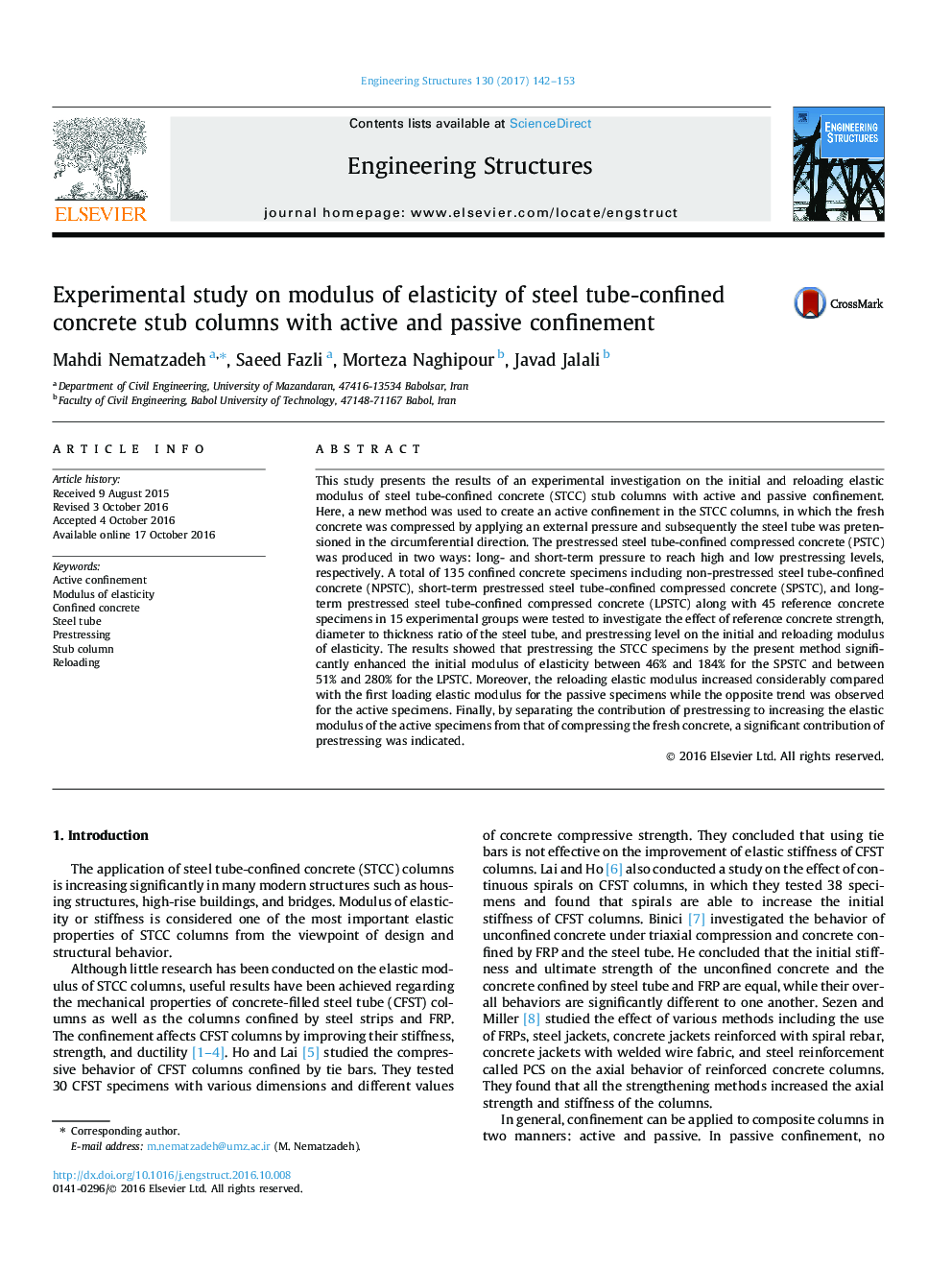| کد مقاله | کد نشریه | سال انتشار | مقاله انگلیسی | نسخه تمام متن |
|---|---|---|---|---|
| 4920558 | 1429097 | 2017 | 12 صفحه PDF | دانلود رایگان |
- Elastic modulus of STCC columns with active and passive confinement was studied.
- Long- and short-term pressure was used for prestressing STCC.
- Prestressing STCC significantly enhanced the initial modulus of elasticity.
- Prestressing STCC was more effective for lower reference concrete strength.
- Reloading modulus of passive specimens increased relative to the initial one.
This study presents the results of an experimental investigation on the initial and reloading elastic modulus of steel tube-confined concrete (STCC) stub columns with active and passive confinement. Here, a new method was used to create an active confinement in the STCC columns, in which the fresh concrete was compressed by applying an external pressure and subsequently the steel tube was pretensioned in the circumferential direction. The prestressed steel tube-confined compressed concrete (PSTC) was produced in two ways: long- and short-term pressure to reach high and low prestressing levels, respectively. A total of 135 confined concrete specimens including non-prestressed steel tube-confined concrete (NPSTC), short-term prestressed steel tube-confined compressed concrete (SPSTC), and long-term prestressed steel tube-confined compressed concrete (LPSTC) along with 45 reference concrete specimens in 15 experimental groups were tested to investigate the effect of reference concrete strength, diameter to thickness ratio of the steel tube, and prestressing level on the initial and reloading modulus of elasticity. The results showed that prestressing the STCC specimens by the present method significantly enhanced the initial modulus of elasticity between 46% and 184% for the SPSTC and between 51% and 280% for the LPSTC. Moreover, the reloading elastic modulus increased considerably compared with the first loading elastic modulus for the passive specimens while the opposite trend was observed for the active specimens. Finally, by separating the contribution of prestressing to increasing the elastic modulus of the active specimens from that of compressing the fresh concrete, a significant contribution of prestressing was indicated.
Journal: Engineering Structures - Volume 130, 1 January 2017, Pages 142-153
